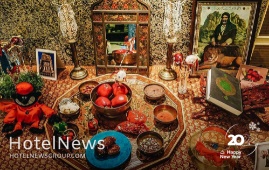
Today announced that it has completed an initial closing of the previously announced portfolio acquisition through its existing joint venture with GIC from affiliates of NewcrestImage. The initial closing included 26 of the 27 hotels totaling 3,533 guestrooms, two parking structures, and various financial incentives. The remaining hotel to be acquired is the currently under construction 176-guestroom Canopy by Hilton New Orleans which is nearing completion, and the joint venture expects to close on the acquisition of the hotel during the first quarter 2022 (collectively with the initial closing referred to as the “Transaction”). The total consideration for the Transaction is comprised of $776.5 million, or $209,000 per key, for the 27-hotel portfolio, $24.8 million for the two parking structures, and $20.7 million for the various financial incentives. The Transaction is expected to be immediately accretive to adjusted FFO per share, generate a stabilized net operating income yield of 8.0% to 8.5% including future capital investment and excluding any ancillary joint venture fees earned by Summit, and be leverage neutral to the Company’s balance sheet while preserving existing liquidity of nearly $450 million.
Create: Jan 15, 2022 Edit: Jan 15, 2022 International News
Over 94,000 domestic tourists have stayed in the province during the mentioned time, Jalil Jabari said on Thursday. In nine months, over 16,000 foreign travelers stayed in the province’s accommodation centers and it is estimated that 5,500 foreign tourists will stay in these units in the fourth quarter of the year, the official added. The accommodation centers have generated over 40 job opportunities during the mentioned time as well, he noted. Back in December, Jamshid Hamzehzadeh the head of the Iranian Hoteliers Association announced that following the planned measures, the occupancy rate of the country’s hotels, which had fallen below five percent because of the outbreak of the coronavirus, has reached 45 percent over the past three months. Multiple problems, notably the pandemic, caused a severe impact on the tourism industry, the official explained. Even before the coronavirus outbreak and in 2019, travel was reduced due to heavy rains and flooding across the country, and the hotel industry had to recoup nearly 100 percent of the costs paid for canceled hotel reservations, he added. The Iranian hoteliers have lost 220 trillion rials (about $740 million) over the past two years, he noted. However, some problems have been resolved and the hotels’ condition has improved, he mentioned. Back in October, the official announced that Iranian hotels are ready to receive foreign tourists as the issuance of tourist visas and the flow of foreign tourists from land and air borders would be resumed. Ninety percent of the hotel staff have been vaccinated against the coronavirus, so the hotels are ready to welcome foreign tourists, observing strict health protocols, he said. The main destinations of foreign tourists in Iran are specifically cities such as Mashhad, Qom, Tabriz, Shiraz, Yazd, and Isfahan, and to return to the figure of over eight million incoming tourists before the outbreak of the coronavirus, serious planning is required, the official added. Iraqi tourists will flood the country once the borders open, but attracting tourists from Europe will require some time, he noted. However, he noted that two-thirds of the hotel staff have lost their jobs, he added. Back in September, Hamzehzadeh announced that all employees of accommodation centers across Iran are scheduled to be vaccinated against the coronavirus. “To vaccinate staffs of all accommodation centers, including eco-lodges, apartment hotels, and guest houses, as well as hotels, more coordination with the Ministry of Health is needed,” he added.
Create: Jan 15, 2022 Edit: Jan 15, 2022 Regional News
Arabian, who is a master of metalwork and Minakari (enamel), participated in the event with one of her exquisite works, a lavishly-decorated metal bowl designed for serving gaz (nougats with pistachios and almonds), CHTN quoted Vida Tavahodi as saying on Friday. Minakari is an ancient art of painting natural motifs such as flowers and birds on the surface of metals, mostly copper. Due to the outbreak of the coronavirus, the event was held virtually in India, but the artist will soon be awarded the prize at a ceremony, the official added. The award for the Male Craftsperson of the Year went to Dalavayi Kullayappa from India, while Zohra Said from Morocco and Ismael Arturo Rodriguez Moreno from Mexico named Female Craft Designer of the Year and Male Craft Designer of the Year respectively. ICA is organized by Craft Village, a social organization, based out of New Delhi, India, working towards training and promotion of handicrafts. ICA sets a new benchmark in the world with the highest level of skill and design excellence. The awards provide an open platform for makers working in a wide variety of materials and media to have their work assessed by a professional jury and international craft experts. These awards promote, inspire and encourage talent of the highest standards, making International Craft Awards an annual global feature. With 14 entries, Iran ranks first globally for the number of cities and villages registered by the World Crafts Council, as China with seven entries, Chile with four, and India with three ones come next. In January 2020, the cities of Shiraz, Malayer, and Zanjan and the village of Qassemabad were designated by the WCC- Asia Pacific Region, putting Iran’s number of world crafts cities and villages from ten to 14.
Create: Jan 15, 2022 Edit: Jan 15, 2022 Regional News
Wyndham Hotels & Resorts, the world’s largest hotel franchising company with approximately 9,000 hotels across nearly 95 countries, continues to expand its global footprint with its entry into Poland with the 205-room upscale Wyndham Wroclaw Old Town. Managed by Mogotel Hotel Group, a leading hotel operator in the Baltics, the property is expected to open early next month and will be located in the heart of Wroclaw’s city center. One of the largest cities in Western Poland and home to many renowned universities and research centers, Wroclaw combines rich history and charming architecture with a lively cultural scene across its museums, theatres, art galleries and workshops. Perfectly positioned for exploring the central, picturesque Old Town with many attractions and landmarks, the hotel will feature stylish guest rooms, an expansive atrium and a top floor wellness area, with a state of the art fitness room, sauna and steam bath. The hotel will offer a wide range of food and beverage outlets including a gourmet restaurant, a cozy lounge and bar to relax and socialize. Those traveling for business will also have access the hotel’s 11 meeting rooms, which accommodate a total capacity of over 400 attendees. In addition, the hotel is conveniently located just 10 miles from Wroclaw’s International Copernicus Airport. Wyndham Wroclaw Old Town is the latest addition in Wyndham Hotels & Resorts growing portfolio in Europe, including over 350 operational hotels across 30 countries and a development pipeline of over 90 properties. Wyndham hotels in Poland and around the world participate in Wyndham Rewards, the world’s most generous hotel rewards program with more than 50,000 hotels, vacation club resorts and vacation rentals worldwide.
Create: Jan 11, 2022 Edit: Jan 11, 2022 International News
The Kingdom of Saudi Arabia is home to the first hotel in the world to serve and comfort camels. The hotel, called Tatman, includes 120 hotel rooms that provide all services to camels, local media from the gulf country reported on Sunday. According to Arabic daily, English Al-Arabiya, more than 50 people serve in this hotel and they are divided between room services, care, attention, and protection as well. Tatman hotel, provides a 5-star service, including preparing meals for camels, taking care of the appearance and general appearance, in addition to providing hot milk, and making sure to clean and heat the rooms. “This hotel is the first of its kind in the world, but in a different and new style. Everything is available ranging from cleaning rooms to warm air-conditioning,” the official spokesman for the camel club in Saudi Arabia, Muhammad Al-Harbi said in a presentation video.
Create: Jan 11, 2022 Edit: Jan 13, 2022 International News
The Iranian tourism industry has suffered $233m losses due to COVID restrictions over the past two years. “Iranian tourism facilities have incurred a loss of 69 trillion rials ($233 million) due to the outbreak of the coronavirus over the past two years,” an official with the tourism ministry has said. It has been a major shock to the tourism industry when the coronavirus emerged in 2019, Rokna quoted Mohammad-Kazem Kholdi-Nasab as saying on Monday. Citing an example, the official said, nearly all pre-scheduled trips were canceled during the new Iranian year holidays in March 2020 except for those that were necessary. “Travel is not believed to be the cause of the outbreak, rather it is a lack of adherence to health protocols that have caused the outbreak, but people canceled their trips anyway, causing major damage to the tourist facilities across the country,” he explained. With only two months until the upcoming new Iranian year holidays, the tourism ministry is preparing safe and smart travel packages for Iranian holidaymakers and travelers, he noted. Nearly 70 percent of the population has been vaccinated, so these trips may be able to partially compensate for the damage done to tourism facilities over the past two years, he mentioned. Last year the tourism ministry announced that the tourism of the country was growing before the corona outbreak, its revenues reached $11.7 billion in 2019, which accounted for 2.8% of GDP, nearing the average share of tourism in the world GDP, which was 3.2 percent. Iran was ranked as the second fastest-growing country in tourism based on data compiled by the World Tourism Organization. Experts expect Iran to achieve a tourism boom after coronavirus contained, believing its impact would be temporary and short-lived for a country that ranked the third fastest-growing tourism destination in 2019. The Islamic Republic expects to reap a bonanza from its numerous tourist spots such as bazaars, museums, mosques, bridges, bathhouses, madrasas, mausoleums, churches, towers, and mansions, of which 26 are inscribed on the UNESCO World Heritage list. Under the 2025 Tourism Vision Plan, Iran aims to increase the number of tourist arrivals from 4.8 million in 2014 to 20 million in 2025.
Create: Jan 8, 2022 Edit: Jan 8, 2022 Regional News
Iran pavilion is set to add extra charm to the prestigious Expo 2020 Dubai by widening its outline such as an enormous celebration of Noruz, the Persian New Year, which will begin on March 21. The decision was reached during a meeting between the Cultural Heritage, Tourism and Handicrafts Minister Ezatollah Zarghami, Culture and Islamic Guidance Minister Mohammad-Mehdi Esmaeili and Industry, Mining, and Trade Minister Reza Fatemi Amin, Mehr reported on Sunday. During the meeting, the financial support needed to implement the ideas for improving the condition of Iran’s pavilion during the remaining 100 days of the expo was also discussed. Noruz, which usually falls on March 21st every year, marks the beginning of spring across a vast geographical area. The feast was initially registered on the UNESCO List of the Intangible Cultural Heritage of Humanity in 2009, as a common tradition for Iran, Azerbaijan, India, Kyrgyzstan, Pakistan, Turkey, and Uzbekistan. However, the five other countries put in requests officially to be added to the list during a meeting held in Tehran in January 2014. In December 2016, Iran and 11 other countries registered Noruz as a common tradition during the 11th session of the Intergovernmental Committee for the Safeguarding of the Intangible Cultural Heritage, held in Addis Ababa, Ethiopia. Noruz, according to UNESCO, promotes the values of peace and solidarity between generations and within families, as well as reconciliation and neighborliness, thus contributing to cultural diversity and friendship among peoples and various communities. Noruz traditions, however, vary from place to place, ranging from leaping over fires and streams in Iran to tightrope walking, lighting candles at house doors, traditional games such as horse racing, or the traditional wrestling practiced in Kyrgyzstan.
Create: Jan 3, 2022 Edit: Jan 3, 2022 Regional News
Alphabet’s self-driving car company Waymo is partnering with Chinese automaker Geely to create a fleet of all-electric, self-driving robotaxis. The cars will be designed in Sweden (where Geely owns Swedish carmaker Volvo) and will be adapted from Geely’s all-electric five-door Zeekr. Waymo will then outfit the cars with the hardware and software necessary for autonomous driving. Waymo said in a blog post that it plans to deploy the vehicles in the US as part of its existing fleet of self-driving robotaxis some time “in the years to come.” Concept images of finished vehicle shared by Waymo show a car that is designed specifically for autonomous ride-hailing trips. It has a flat floor, low step-in height, and B-pillarless design for easy entry and exit, as well as sliding doors, reclining seats, and plenty of headroom. Waymo says future models will have an interior without steering wheel or pedals — just a screen (presumably to let riders check on the progress of their journey). These are just concept images, though, and might not necessarily reflect the finished vehicles Geely and Waymo will eventually put on the roads. It’s notable that Waymo’s concepts make the car look much more like a minivan, while Geely’s Zeekr 001 has a design that’s more like a cross between a station wagon, a shooting brake, and an SUV. News of the deal between Geely and Waymo is another demonstration of just how busy the auto world is with partnerships and collaborations as self-driving and electric tech shakes up old incumbents. Waymo has partnered with Stellantis and Jaguar Land Rover to deploy and develop its autonomous capabilities, while Geely plans to take Volvo public as an all-electric company, after doing the same with its new Polestar brand.
Create: Jan 2, 2022 Edit: Jan 2, 2022 International News
Iran's Ministry of Cooperatives, Labour, and Social Welfare has declared Tehran's readiness to dispatch Iranian skilled workforce to Serbia. Director General of the Ministry of Welfare and Social Security for international affairs Hamed Forouzan made the remark in a meeting with Serbian Ambassador to Tehran Dragan Todorović on Wednesday. Referring to long-term political and international relations between Serbia and Iran, Forouzan noted that a draft memorandum of understanding on job creation and vocational cooperation is being finalized and that another MoU on social security is being prepared, which would be inked hopefully concurrent with a visit by Serbian President Aleksandar Vučić to Iran. The Iranian official also invited the Serbian ambassador to pay a visit to the Social Security Investment Company of Iran (SHASTA), adding that the meeting with the ambassador can help facilitate cooperation between Serbian and Iranian economic and trade groups. Forouzan underlined that the Islamic Republic of Iran expects Serbia to support Tehran in international organizations. Todorović, for his part, said that the joint meeting has been held to evaluate the current situation in order to pave the way for expansion of trade ties in different fields such as agriculture and tourism. Emphasizing on the need for facilitating issuance of visa for businessmen of both countries, the ambassador said that the main obstacle in the way of expansion of trade relationship is problems concerning banking transactions. He expressed hope that resolving political issues would pave the way for feasible trade and banking cooperation. Statistics indicate that trade ties between Serbia and Iran boosted in recent years, for instance the economic exchanges stood at 52.3 million dollars in 2018. Iran exported goods worth 42.4 million dollars to Serbia in that year and imported 9.8 million dollars from the European country in the same period.
Create: Jan 2, 2022 Edit: Jan 2, 2022 International News
Red tourism, which refers to visiting historical sites with a modern revolutionary legacy, became an increasingly popular choice for travelers in 2021, data from a recent report showed. The number of searches for "red tourism" on Mafengwo, a Chinese travel service and social-networking platform, increased by 176 percent this year from a year earlier, according to the report jointly published by Mafengwo and China Tourism Academy. According to Xinhua, red tourist destinations in north China's Beijing-Tianjin-Hebei region have grown in popularity at the quickest rate nationwide, with the number of searches surging 240 percent year-on-year, the report said. Nearly 42 percent of respondents to a survey in the report said they visited red tourist sites more than three times this year, and over 40 percent of them went to such places "frequently" and "voluntarily" for sightseeing and knowledge. Red-themed homestay and live show are the favorite activities of tourists in 2021, with each of them accounting for nearly 20 percent of all activities in red tourism, according to the report.
Create: Jan 2, 2022 Edit: Jan 2, 2022 International News
Menus are an important aspect of the overall presentation of a hotel restaurant. Indeed, a whole book on proper menu design could be written, with inventory arrangements, fonts, graphics, spacing, types of paper, menu backings and all other stylistic concerns outlined as contributing factors for a guest’s overall appreciation of the dining outlet. The pandemic has thrown a wrench in this marketing and sentiment-boosting tool as many customers now expect menus to be accessible on their phones via a QR code. The benefit for the restaurant is certainly there in the form of saving on printing costs, but it’s nonetheless a tradeoff. The concern that we have over the proliferation of QR menus is that they don’t build guest satisfaction as much as their physical antecedents, and this reduced sentiment can halo back onto room revenues in a negative way. Here’s why: paper is palpable. You feel the slight roughness of a thick paper stock, subtly smell the ink, are delighted by the way the room’s lighting creates soft shadows on the page and are soothed by (what we ideally hope that you would use for your establishment) the touch of the leather menu backing on the palm of your hand. Viewing a menu on your phone gives you none of that. Yes, you get graphics, color and the ability to keep the webpage updated in real-time as inventory changes, but everything beyond the straight visuals are lost in the endless scroll of a two-dimensional screen. And building on this notion of scrolling, one critical difference is that a physical menu presents all items together for readers to consider, whereas a responsive webpage (over simply displaying a PDF version of the menu) will usually configure all items into a single column so as to keep everything legible and to avoid lots of pinching. This second drawback is one of perception, where a narrowly focused column on one’s phone can increase the observed length of the menu, resulting in patrons ‘dropping off’ before perusing the entirety of it. We see a similar trend in website readership where it falls precipitously after around the first quarter of an article or page. In sum, on digital-first menus, you have to put your most expensive items (or highest margin) items at the top or they will likely be missed. At this point, with the end of the pandemic still very much a question mark, optionality and fitting your theme is what works best. Paper menus should be readily presented at high-end restaurants so that the theme is congruent and customer satisfaction isn’t deteriorated, while at more casual settings a QR code access may be just fine. While there are both paper and labor costs associated with QR menus, you must still consider the above downsides.
Create: Jan 1, 2022 Edit: Jan 1, 2022 F and B
After years marred by a global public health crisis, many of us are lapping up in-person social gatherings with friends, family and colleagues. Morning catch-ups over coffee, afterwork happy hour at the favorite waterhole or weekend drinks in town had mostly been replaced with coffees-to-go, virtual apéros, or alfresco drinking in winter like in summer. Consumers have become today their own baristas and bartenders, imbibing alone at home or at a distance outside. So how, and with what, will we quench our thirst? Here is EHL’s selection of the top drink trends in 2022. In this pandemic-era, there is no doubt that the megatrends for the new year will center around healthier and ‘cleaner’, more sustainable, premium and socially responsible products in line with the mantras – good for me, good for the planet – and quality over quantity. With movements like mindful drinking and “sober curious” gaining popularity, research indicates that alcohol consumption has declined with younger generations drinking less as they show greater interest in holistic wellness and health. And the beverage industry has been paying attention to these shifts in concern, consciousness and habits. Functional and healthy beverages are on the rise, and no and low alcohol ready-to-drink offerings from North America to Europe and Asia-Pacific have boomed as they prove to be both a more convenient and ‘safer’ option in a world still plagued by COVID-19 measures and barrier gestures. But globally, we’re seeing an array of interesting new product developments, packaging innovations and surprising mergers and acquisitions with the lines between the health movement, the low- and no- alcoholic category and the wider drinks industry becoming increasingly blurred. Beyond these general tendencies, we take a look at six particular drink trends for the year ahead. 1. CBD-infused relaxation drinks For those of us who frequent trendy bars, a controversial yet very 2022 new trend has found its way onto cocktail menus in only the most avant-garde of venues. 2. The bubble tea craze goes global Despite being invented in the 1980s, bubble tea is set to see its popularity soar to new heights. From the US to Germany, China to Brazil, the bubble tea industry is going global with its market expected to grow by almost $2 billion to reach $4.3 billion by 2027. The refreshing Taiwanese tea-based drink with its tapioca or fruit jelly ‘bubbles’ is appealing to health-conscious individuals enjoying the healthier variants low in sugar, with organic soya milk, green tea or fruity mixes as well as a younger generation seduced by its 200 or so different flavor combinations and even more customizable options making for a truly unique, tasty and fun drink. 3. Fermented drinks as a health-booster Increased awareness on the importance of fueling our body with quality and nutritious food and drink is driving a rapid growth in fermented beverages, occupying a significant portion within the functional and healthy drinks category. It’s estimated that probiotic beverages are expected to achieve over $77 billion in sales by 2025, almost double the revenue generated worldwide in 2018. While kombucha has been topping the leader board for some years, it’s now got some serious competition. Water kefir, with its more diverse probiotic strains shown to help boost the immune system and aid digestion, is gaining momentum and creeping into the mainstream. As is the fermented Mexican soda Tepache – another healthy, flavorsome, sustainable alternative to kombucha. While not new in itself, it has promising prospects in this ‘health-conscious’ era, but hey, it’s just a gut feeling! 4. Wines and champagnes with star power Celebrity beverage endorsements are nothing new. Think George Clooney and Nespresso, Jennifer Aniston and Smart Water, or countless sporting stars endorsing energy drinks. But expect to see more and more vineyards and champagne houses partnering with big names to capitalize on their glamorous images and extend their respective brand portfolios. After John Legend, Kylie Minogue or Brad Pitt, Cameron Diaz is the latest celebrity to venture into the wine business with her “clean” wines. The range comprises of an organic and vegan French rosé and Spanish white with no added sugar, with Diaz tapping into both the wellness trend and that of the growing ‘thirst’ for ‘pink’ wine. Such partnerships are also strategic in helping introduce wines and champagnes to new consumers, in particular millennial drinkers drawn to celebrity and wellness lifestyles, and who aren’t impartial to the Instagrammable aesthetic of a fizzy or rose-tinted drink. 5. Boxed wine as a sustainable (and sanitary) choice Did you know that during the COVID-19 pandemic, bag-in-a-box wine was the supermarket alcoholic “go-to” beverage? The draw? Beyond the product within the bag, boxed wine is easier to store, it better preserves open wine, and is proving a more hygienic and sustainable option, in particular for restaurants. With each three-liter box generating about half the carbon dioxide emissions to that of a glass bottle, boxed wine is also cheaper to transport, stock and more environmentally-friendly. Something that even the more premium wine houses can’t ignore. While wine connoisseurs may jump to the conclusion that boxed wine equates to poor quality, industry experts are suggesting that that’s changing, and fast, as sales are forecast to continue surging around the world in 2022. 6. Canned cocktails with premium products While some may have enjoyed following online mixology tutorials to create their own home-made cocktails, many long for the days when original creations were served ready-made for immediate consumption. Well, spirit brands and hotel chains like the Marriott have wasted no time to offer the perfect solution and create a variety of delicious, bartender-quality, ready-to-drink cocktails in cans. Tipped to be the hottest trend in the alcoholic beverage space in 2021, the development of prepared cocktails-to-go has, according to Nielsen Premium Panel data, accelerated 171% in 2020, and shows no signs of slowing down in 2022. With high-quality ingredients, authentic flavors, options between low-calorie, sugar and alcohol or premium spirits, and convenient and sanitary packaging – grab-and-go cocktails are here to stay. 7. Spiked sodas and alcohol-free beers and spirits With interest in low and no alcohol by volume (ABV) drinks skyrocketing over the last few years, more and more people are looking for a middle ground between tee-total and drinker, between functional and indulgent, between high-quality and convenience. Consequently, low and non-alcoholic beverages are flooding the market and is the space to watch. From non-alcoholic beers and premium mocktails by spirit brands to the boom of hard seltzers now spilling over into hard coffees and kombucha – consumers are going to be spoilt for choice. Whether it’s wanting something with less sugar and alcohol, with premium products, looking for a slight ‘kick’ in traditional non-alcoholic beverages or an alternative to beer, this growing category ensures there’s something for every taste bud and type of drinker. Drink trends 2022: a toast to good health As we look to turn our backs on 2021, and raise our glasses to a new year, the question still lingers as to whether the drinking habits developed in a COVID-era will prevail in a post-pandemic world. While there is still so much uncertainty, what is clear is that the increasing consumer interest in health, wellness and mindfulness is shaping the beverage industry as a whole as it seeks to quench this thirst for holistic balance. For being able to choose alcohol-free beverages without having to sacrifice flavors, fizz or authenticity. For indulging in a drink without having to abstain completely. For a return to more simplicity with natural and ‘clean’ products. For drinking less in quantity but better in quality.
Create: Jan 1, 2022 Edit: Jan 1, 2022 Coffee Shop
